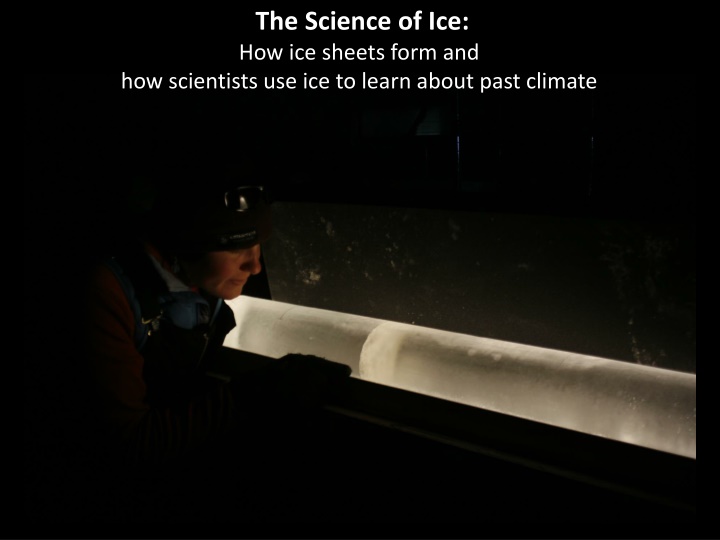The Science of Ice: Formation, Climate Insights, and Art Activity
Glaciers and ice sheets form through the accumulation of snow, which compresses into dense layers of firn and eventually solid ice. Scientists study ice cores to extract valuable information about past climate changes, including fluctuations in greenhouse gas concentrations. Explore the process of how ice forms, its role in understanding climate change, and engage in an ice core art activity to visualize snowflakes, firn, and ice.
Download Presentation

Please find below an Image/Link to download the presentation.
The content on the website is provided AS IS for your information and personal use only. It may not be sold, licensed, or shared on other websites without obtaining consent from the author.If you encounter any issues during the download, it is possible that the publisher has removed the file from their server.
You are allowed to download the files provided on this website for personal or commercial use, subject to the condition that they are used lawfully. All files are the property of their respective owners.
The content on the website is provided AS IS for your information and personal use only. It may not be sold, licensed, or shared on other websites without obtaining consent from the author.
E N D
Presentation Transcript
The Science of Ice: How ice sheets form and how scientists use ice to learn about past climate
Glaciers and ice sheets form as snow accumulates. Over time, as snow accumulates, pressure increases, weighing down the underlying snow. This creates a layer of dense snow, called firn. Eventually the firn gets so compacted it turns into solid ice. Scientist study this ice to learn about past climate changes. Source: http://hays.outcrop.org/images/glaciers/press4e/figure-16-08.jpg
Ice Cores and Climate Change: Greenhouse gas concentration fluctuations Ice can preserve ancient atmospheres The concentrations of greenhouse gas like carbon dioxide and methane can be extracted from air bubbles trapped within the ice. Gases get trapped Snow accumulates Ice forms with bubbles in it This is a composite record of the CO2 measured in Antarctic ice cores Data sources: Jouzel (2007), Luthi (2008), Siegenthaler (2005), MacFarling (2006), NOAA
Ice Core Art Activity - Can you draw snowflakes, firn and ice? - What do you think each would look like?

